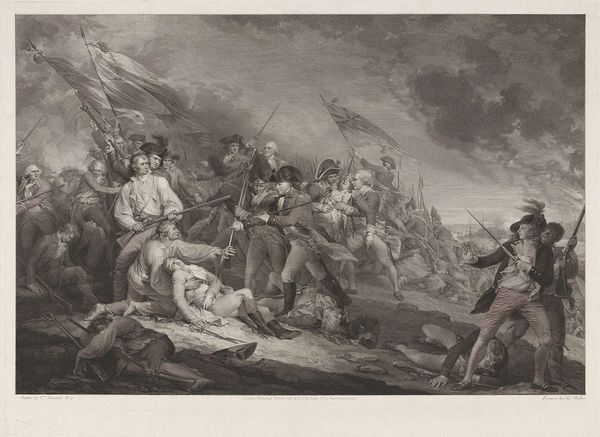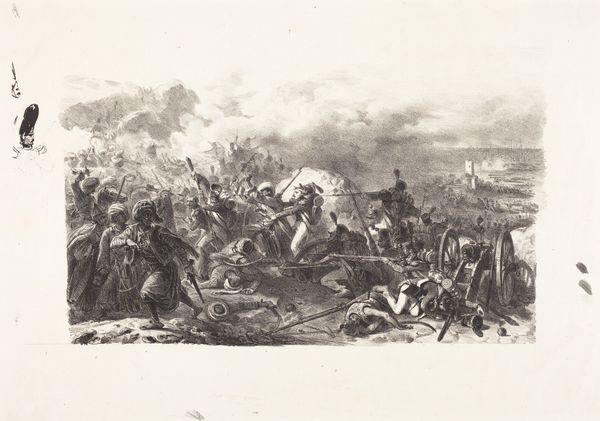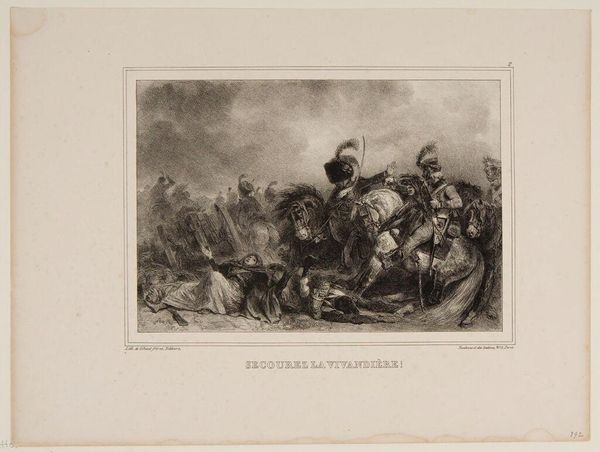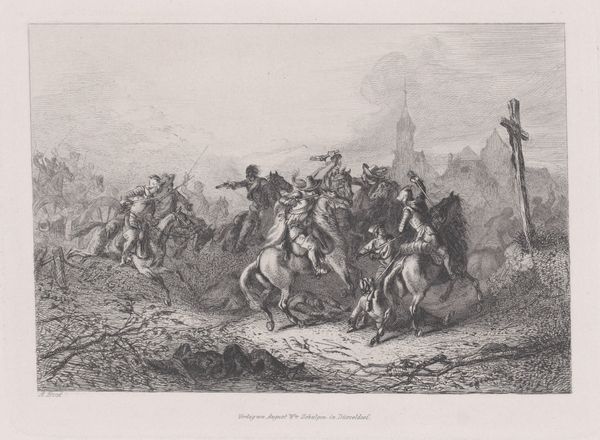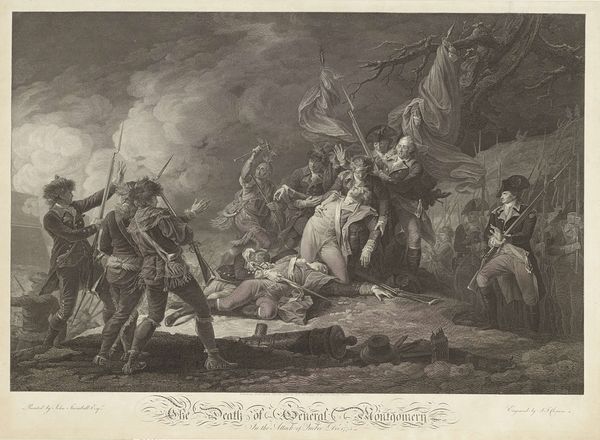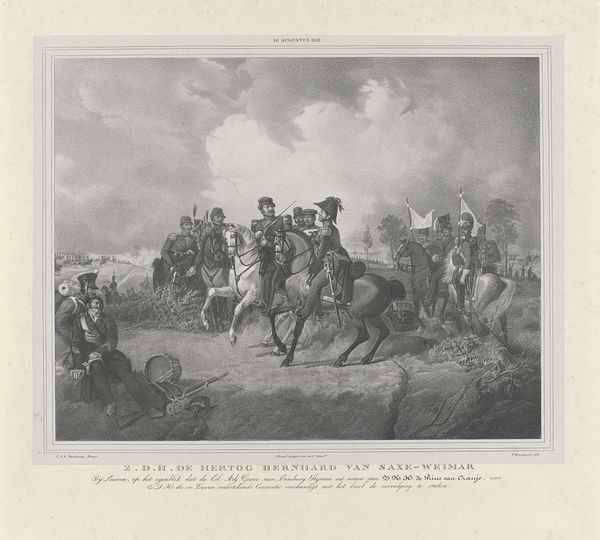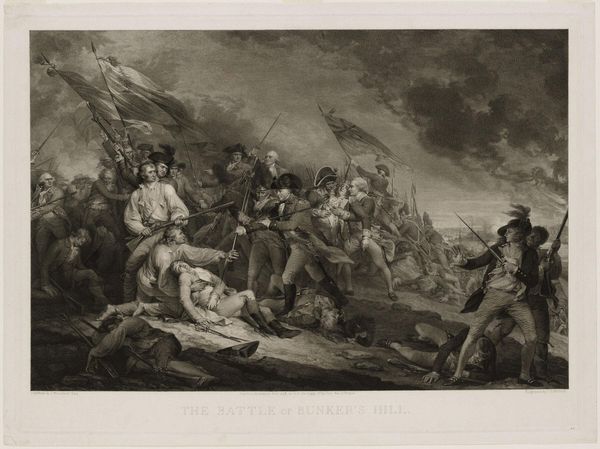
print, graphite, engraving
#
narrative-art
# print
#
landscape
#
figuration
#
graphite
#
history-painting
#
graphite
#
engraving
#
realism
Dimensions: 690 mm (height) x 896 mm (width) (plademaal)
Editor: Here we have Joel Ballin’s “The Night After the Battle,” created sometime between 1848 and 1870 using graphite and engraving. The weariness of the soldiers really comes through; it makes me think about how war is remembered. What aspects of this work stand out to you? Curator: What strikes me is how this print, with its relatively small scale, attempts to capture and disseminate a vision of war and its aftermath. Consider when this was made: photography was in its infancy, and printmaking held a crucial role in shaping public perception of events. Ballin's decision to depict the soldiers not in heroic action but in exhausted repose tells us something about a changing societal view of warfare, perhaps a questioning of nationalist narratives? Do you see a tension between romanticizing the military and realistically portraying its consequences? Editor: I do now that you mention it. There's something staged about the composition, a kind of deliberate arrangement that feels… propagandistic? But also, there is this undeniable sadness in the figures. It's like two opposing messages are colliding. Curator: Exactly. The artist utilizes a public medium of printmaking to reach a broader audience and present a narrative of war in a way that serves as both a historical record and potentially a social commentary. Note the contrast between the immediacy the medium lends itself to, and the artistic decision to include tropes from History Painting, aiming for something enduring. It almost feels like an attempt to control the narrative, doesn't it? What kind of audience do you imagine Ballin was hoping to reach with this work? Editor: That’s really interesting. I suppose he wanted to appeal to a sense of national pride, while also reminding people of the cost. This has given me a new way to consider art’s role in shaping public opinion. Curator: Indeed! By understanding the print’s historical and cultural context, we can analyze how it both reflects and shapes perceptions of war and nationalism in 19th century Denmark.
Comments
No comments
Be the first to comment and join the conversation on the ultimate creative platform.



